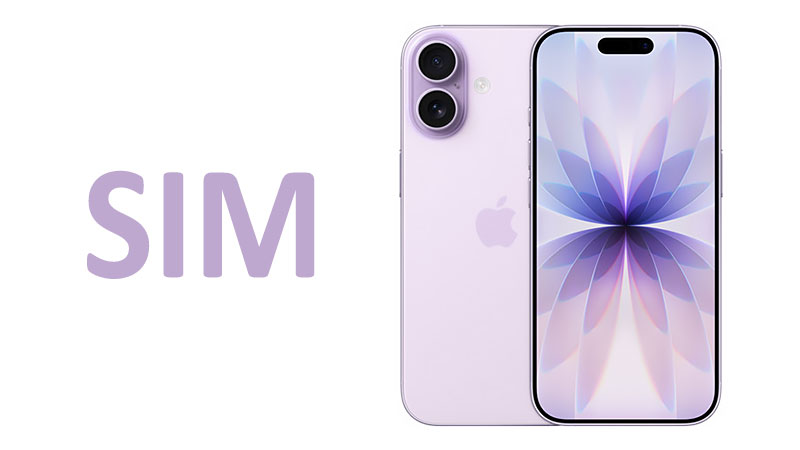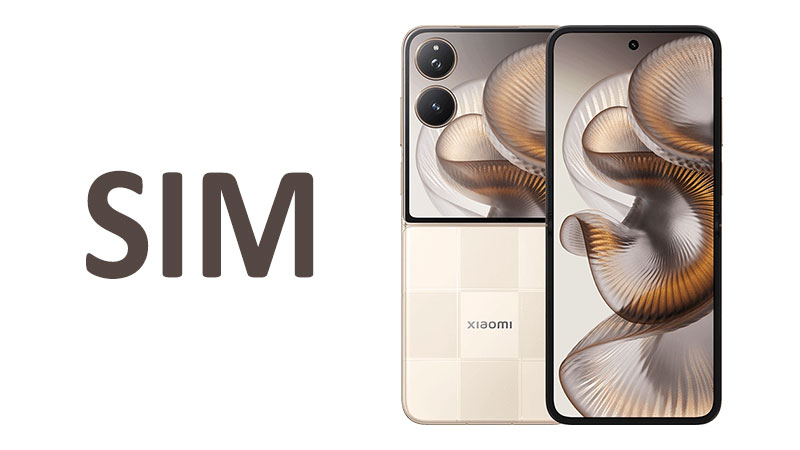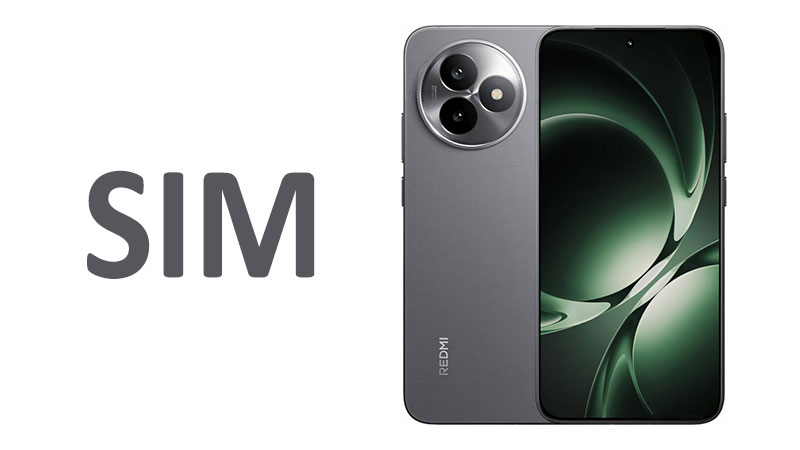The Apple iPhone 17 SIM configuration and its advanced connectivity features set a new industry benchmark. This flagship device offers a powerful combination of digital and physical identity options. It ensures a seamless, high-speed mobile experience for consumers globally. Understanding the distinct regional SIM setups is vital for international travelers. Furthermore, a deep dive into the upgraded wireless and wired standards clarifies the phone’s true power. This comprehensive guide explores every crucial aspect of the iPhone 17’s global connectivity. It helps buyers make an informed decision about this complex technology suite.
The Future of Mobile Identity: SIM Architecture
The iPhone 17 continues Apple’s consistent move toward the digital standard for subscriber identity. The device’s SIM architecture is highly flexible. It offers customized configurations to comply with different carrier needs and regulations worldwide. This strategic approach ensures the widest possible compatibility. The design heavily favors the convenience and security of the embedded SIM (eSIM). The management of cellular lines remains centered on this core digital technology.
Regional Breakdown of SIM Configurations
The available Subscriber Identity Module (SIM) setup depends entirely on the geographical region of purchase. This is a critical detail that international buyers must acknowledge. Apple tailors the hardware design to specific market requirements. This compliance is essential for smooth network operation in each country.
International Model: Nano-SIM and Dual eSIM Flexibility
The international version of the iPhone 17 offers maximum adaptability. It includes support for one traditional, physical Nano-SIM card. In addition, it supports the storage of multiple eSIM profiles. The device is engineered to allow a maximum of two lines to be active simultaneously. This is the device’s Dual-SIM capability. Users have two primary active options. They can pair the physical Nano-SIM with one active eSIM profile. Alternatively, they can use two active eSIM profiles concurrently. This versatility is perfect for those who require separate phone numbers. It is also invaluable for travelers managing local and primary service providers. This configuration provides a balanced solution for most global consumers.
USA Model: Complete eSIM Adoption
In the United States market, the iPhone 17 fully commits to the digital future. This variant is designed to be exclusively eSIM-only. There is no physical SIM card tray included in the device hardware. Users gain the ability to store eight or more eSIM profiles on the phone. However, only two profiles can be active at the same time for Dual-SIM functionality. This choice offers significant design benefits. It enhances the phone’s water and dust resistance. It also provides a stronger security posture against physical theft or tampering. This eSIM-only approach simplifies the process of network activation and switching for US customers.
China Model: Dual Physical SIM Support
Apple continues to respect the unique regulatory and consumer demands in mainland China. The iPhone 17 model sold in China includes a dedicated tray for two physical Nano-SIM cards. This allows for simultaneous Dual Nano-SIM usage. The standard eSIM functionality is typically disabled in this particular variant. This specific hardware configuration is necessary for compliance. It meets the strong local preference for physical Dual-SIM usage. Consumers purchasing and using the device in this region must note this distinction.
Specialized Comparison: iPhone 17 SIM vs. Previous Models
The iPhone 17’s SIM setup follows the path established by the iPhone 16 and 15 series. The main trend is the continuation of the eSIM-only mandate in the US. This commitment differentiates it from older iPhones that all featured a physical SIM slot globally.
Comparing the eSIM to the traditional Nano-SIM reveals clear advantages. Switching a physical SIM requires manual handling and a special tool. An eSIM profile activates almost instantly via a digital download or QR code scan. Furthermore, a physical card only holds one network identity. The iPhone 17 can store multiple network profiles digitally. This simplifies frequent changes between domestic and international carriers. The eSIM is integrated and secure. It offers superior resistance to loss or physical damage compared to external cards. This provides a significant security and convenience upgrade.
Pros and Cons of the eSIM-Centric Design
The strong emphasis on eSIM technology in the iPhone 17 yields several powerful benefits. Nevertheless, it introduces a few operational challenges that buyers must consider. These points directly impact the daily user experience and global usability.
Pros of eSIM Technology
- Enhanced Device Security: The eSIM is embedded inside the phone’s main logic board. This makes it impossible to remove or swap if the phone is lost. This greatly improves anti-theft tracking capabilities.
- True Dual-SIM Efficiency: Users easily manage two distinct phone numbers on a single device. This is ideal for dividing business and private calls and data use.
- Instant Activation: New cellular plans are activated digitally within minutes. This removes the need to wait for a physical card shipment or store visit.
- Improved Water Resistance: Eliminating the SIM tray slot strengthens the phone’s seal. This directly increases its resistance to water and dust ingress.
- Internal Component Optimization: Removing the physical tray mechanism frees up internal space. Engineers can allocate this space to other critical components, like a larger battery.
Cons of eSIM Technology
- Complicated Transfer Process: Migrating an eSIM profile to a new phone can be difficult. It often requires specific support steps from the network carrier.
- Variable Global Support: eSIM technology is not yet universally adopted by all carriers worldwide. Travelers may encounter limitations in certain regions with less modern network infrastructure.
- Network Troubleshooting: Physical SIM swapping is a quick way to diagnose network issues. Troubleshooting an eSIM problem usually involves more complex digital diagnosis and carrier intervention.
Important Points for Buyers Regarding SIM
Prospective buyers must confirm their purchase region before buying the iPhone 17. The US model will not accept a physical SIM card. Global travelers who rely on cheap, disposable local SIM cards should ensure their destination carrier supports eSIM. Business professionals should utilize the Dual-SIM capability actively. It simplifies the management of work and personal communications on one phone. Frequent international travelers can benefit immensely from storing multiple data plans. They can activate these plans instantly upon landing in a new country. This advanced feature offers considerable cost savings and convenience.
Superior Wireless Performance: Cellular and Wi-Fi Standards
The iPhone 17 is a formidable communications hub. It supports an extensive range of cellular standards. This guarantees excellent network access and high-speed data transfer across various generations.
Comprehensive Cellular Technology Support
The iPhone 17 maintains robust support for legacy networks. It covers GSM, CDMA, HSPA, EVDO, and LTE. This ensures essential backward compatibility and global reach. The phone will connect reliably almost anywhere in the world. However, the primary focus remains on maximizing 5G network performance.
The 5G capability is the key feature of its cellular technology. 5G delivers vastly superior data speeds compared to 4G LTE. Crucially, it provides dramatically reduced network latency. Low latency is essential for demanding applications. These include real-time cloud services, competitive online gaming, and high-quality video streams. The iPhone 17 is engineered to utilize available 5G spectrum efficiently. This results in a consistently fast mobile internet experience. The device will support both widespread Sub-6GHz and potentially the ultra-fast mmWave 5G in high-density urban zones.
Specialized Comparison: 5G Modem Technology
The 5G modem inside the iPhone 17 is expected to be the latest generation. This offers improved efficiency and speed compared to previous iPhone models. The performance advantage over an older iPhone 15, for example, lies in energy efficiency. The 17’s modem draws less battery power during heavy 5G data use. Competitors also offer 5G technology. However, Apple’s custom antenna integration often yields superior, sustained speed and better hand-off performance. This ensures consistent service even when moving between cell tower coverage areas.
Next-Gen Wi-Fi: Wi-Fi 6 and Wi-Fi 7 Tri-Band
The iPhone 17 includes a powerful Wi-Fi suite. It supports Wi−Fi6 (802.11ax) and the cutting-edge Wi−Fi7 (802.11be) standard. The combination of these two standards guarantees maximum performance and compatibility.
Wi−Fi7 is the most significant upgrade. It introduces major advancements in speed and network capacity. The iPhone 17 supports tri-band operation (2.4 GHz, 5 GHz, and 6 GHz). This allows the phone to select the least congested band automatically. Wi−Fi7 also features Multi-Link Operation (MLO). MLO allows the phone to use multiple frequency bands simultaneously. This dramatically reduces latency and increases data throughput. The iPhone 17 can easily handle large data streams and multiple concurrent connections without slowing down.
Pros and Cons of Wi-Fi 7 Adoption
The main advantage is sheer speed. Wi−Fi7 is theoretically capable of multi-gigabit speeds. This makes it ideal for instantaneous cloud backups and 8K streaming. Another benefit is its superior performance in congested wireless environments. The main drawback, however, is the requirement for a Wi−Fi7 compatible router. Users need to upgrade their home network equipment to realize the full benefits of this feature. Without a Wi−Fi7 router, the phone will seamlessly connect via Wi−Fi6, still providing excellent speeds.
Buyer Guidance on Wireless Performance
Consumers should understand the iPhone 17 is highly future-proofed by Wi−Fi7. Even if they do not upgrade their router today, they are ready for the next generation of home networking. The efficient 5G modem provides rapid speeds for mobile access. The Tri-band Wi-Fi support ensures a stable connection wherever the user is located. These features collectively ensure a high-performance wireless experience. This is crucial for media consumption, online work, and cloud-based services.
Advanced Short-Range and Wired Connectivity
The iPhone 17 introduces key enhancements in both short-range wireless communication and wired interfacing. These upgrades focus on efficiency, speed, and expanded utility.
Bluetooth 6.0: The New Standard for Accessories
The iPhone 17 debuts with the latest Bluetooth 6.0 standard. This is a significant generational leap from the 5.3 standard found in its predecessors. Bluetooth 6.0 is optimized for even lower power consumption (LE). This means connected devices like AirPods and smartwatches will enjoy extended battery life.
Bluetooth 6.0 also delivers improvements in data transfer rates and connection stability. It enhances the reliability of audio streaming. It also improves multi-device communication. This is critical for connecting multiple audio outputs or complex smart home systems. The A2DP and LE support ensure high-quality wireless audio and energy-efficient data exchange.
Comparison: Bluetooth 6.0 vs. 5.3
The core difference between Bluetooth 6.0 and 5.3 lies in energy efficiency and spectral utilization. While 5.3 was highly optimized, 6.0 pushes LE performance even further. It is designed to handle the increasing number of always-on wireless accessories. This results in faster pairing times and a more robust connection in signal-dense areas. The upgrade ensures the iPhone 17 remains cutting-edge for all accessory needs.
Precision Location Services: Dual-Frequency GPS
The iPhone 17 integrates an exceptionally accurate positioning system. It features dual-frequency GPS support: L1 and L5. The L1 signal is the standard GPS frequency. The L5 signal is a modern, high-integrity civilian signal. It is more robust against environmental signal reflections and interference.
By processing both L1 and L5 signals concurrently, the iPhone 17 achieves greater location accuracy. This is a major benefit in challenging environments. These include urban canyons, where tall buildings often degrade satellite signals. This increased precision is vital for navigation, mapping, and location-aware applications.
The phone also connects to a comprehensive array of other satellite navigation systems: GLONASS (Russia), GALILEO (Europe), BDS (China), QZSS (Japan), and NavIC (India). This multi-system support ensures reliable location services globally. The inclusion of NavIC significantly boosts accuracy within the Indian region.
Wired Connections: USB Type-C 2.0 and DisplayPort
The iPhone 17 uses a USB Type-C port for charging and data. This ensures broad compatibility with modern cables and accessories. However, the device features the USB 2.0 standard for data speed. This is a key specification for buyers to note.
USB 2.0 offers a maximum data transfer speed of 480 Megabits per second (Mbps). This speed is perfectly fine for essential charging and basic data synchronization. However, it is relatively slow for transferring very large files. Moving a 50 GB video file, for instance, will take a substantial amount of time.
Despite the USB 2.0 speed limitation, the port includes DisplayPort functionality. This is a significant addition. DisplayPort allows the iPhone 17 to output video directly to an external screen or monitor. Users can mirror their phone screen or extend their desktop for presentations. This feature transforms the phone into a versatile media and productivity tool.
Comparison: USB 2.0 with DisplayPort vs. Pro Models
The non-Pro iPhone 17 is deliberately limited to USB 2.0 speed. This contrasts with the Pro model, which typically features USB 3.2 Gen 2 (10 Gbps) or faster. This speed difference is a primary performance distinction. Professionals requiring rapid transfer of large media files will choose the Pro variant.
However, the inclusion of DisplayPort on the standard iPhone 17 is a notable improvement over prior non-Pro models. It adds a powerful feature for external display output. This adds valuable utility for a wider range of consumers. The USB 2.0 speed is a cost-effective compromise. It allows the standard model to offer a modern interface while maintaining a lower price point.
Buyer Guidance on USB and DisplayPort
Buyers should understand the USB Type-C port’s primary function is charging convenience. They should rely on fast Wi-Fi and 5G for major data backups and transfers. Using the DisplayPort feature is straightforward. Users simply need a compatible USB−C to DisplayPort or HDMI adapter. This capability provides unexpected versatility for media playback and mobile productivity. Do not expect rapid wired file transfer speeds.
Global Connectivity Ecosystem
The overall connectivity ecosystem of the iPhone 17 is designed for simplicity, security, and global usability. The device features other key technologies that enhance its daily function.
NFC and Contactless Features
Near Field Communication (NFC) is fully integrated into the iPhone 17. This technology is crucial for modern mobile life. It facilitates secure, contactless payments through Apple Pay. It also enables quick accessory pairing and streamlined data exchange between devices. NFC remains a cornerstone of the phone’s utility. It supports everything from transit cards to unlocking modern car doors.
The Absence of Radio
The iPhone 17, like its predecessors, omits a dedicated FM radio tuner. This is a standard practice in modern smartphone design. Users must access radio content via internet streaming applications. This relies on the phone’s fast Wi−Fi7 or 5G connection. This design choice aligns with the general shift toward app-based media consumption.
Overall Connectivity Review
The iPhone 17 offers a connectivity profile that is both robust and smart. The device intelligently balances advanced features with cost-effective compromises. The Bluetooth6.0 and Wi−Fi7 ensure that wireless performance is top-tier. The dual-frequency GPS guarantees superior location accuracy. The regional SIM flexibility caters perfectly to the global market. While the USB 2.0 speed is a limitation, the inclusion of DisplayPort adds significant value. This makes the iPhone 17 a remarkably well-connected device for the average user.
Conclusion: Making an Informed Connectivity Choice
The Apple iPhone 17 SIM, Dual-SIM, and connectivity features make a strong case for its position in the market. Its sophisticated SIM architecture offers exceptional flexibility for global users. The eSIM-only approach in the USA signals a secure future. The Dual-SIM capability in international markets remains invaluable.
On the wireless front, the upgrades are substantial. The adoption of Wi−Fi7 and Bluetooth6.0 future-proofs the phone. They provide faster speeds and better energy efficiency than many competitors. Furthermore, the dual-frequency GPS offers superior location precision. The inclusion of DisplayPort on the USB Type-C 2.0 port adds practical functionality. It outweighs the compromise on wired transfer speed for most general consumers. If you prioritize cutting-edge wireless speed, superior global positioning, and modern eSIM flexibility, the iPhone 17 is an excellent choice. This device is built for the next generation of mobile communication.
Frequently Asked Questions (FAQ)
- Does the standard iPhone 17 support both Wi−Fi6 and Wi−Fi7? Yes, the iPhone 17 supports both standards. It will use Wi−Fi7 when a compatible router is available.
- How does the new Bluetooth 6.0 benefit users? Bluetooth 6.0 provides improved energy efficiency (LE). This results in longer battery life for connected accessories like AirPods and smartwatches.
- Can I use two phone numbers at the same time on the iPhone 17? Yes, all versions of the iPhone 17 support Dual-SIM functionality. This allows a maximum of two lines to be active simultaneously.
- Is the USB Type-C port on the iPhone 17 fast for video editing? The port uses the USB 2.0 standard, with a speed of 480 Mbps. This speed is generally too slow for transferring large video files efficiently.
- Why does the iPhone 17 have dual-frequency GPS (L1+L5)? The dual-frequency GPS significantly improves location accuracy. This is especially true in difficult environments where satellite signals might be blocked by tall buildings.



